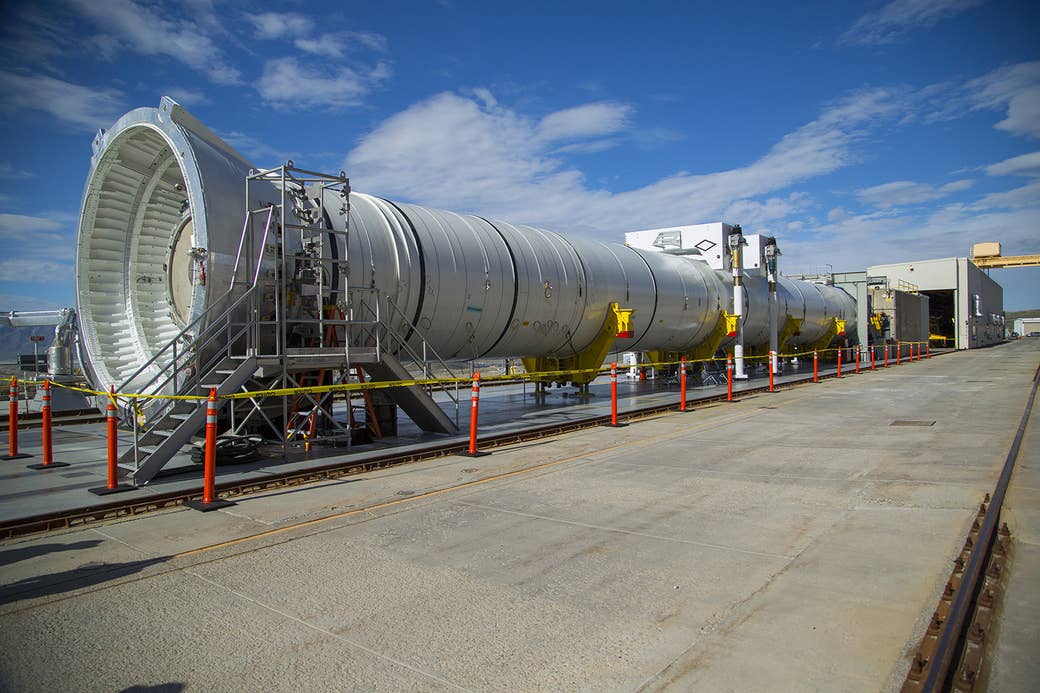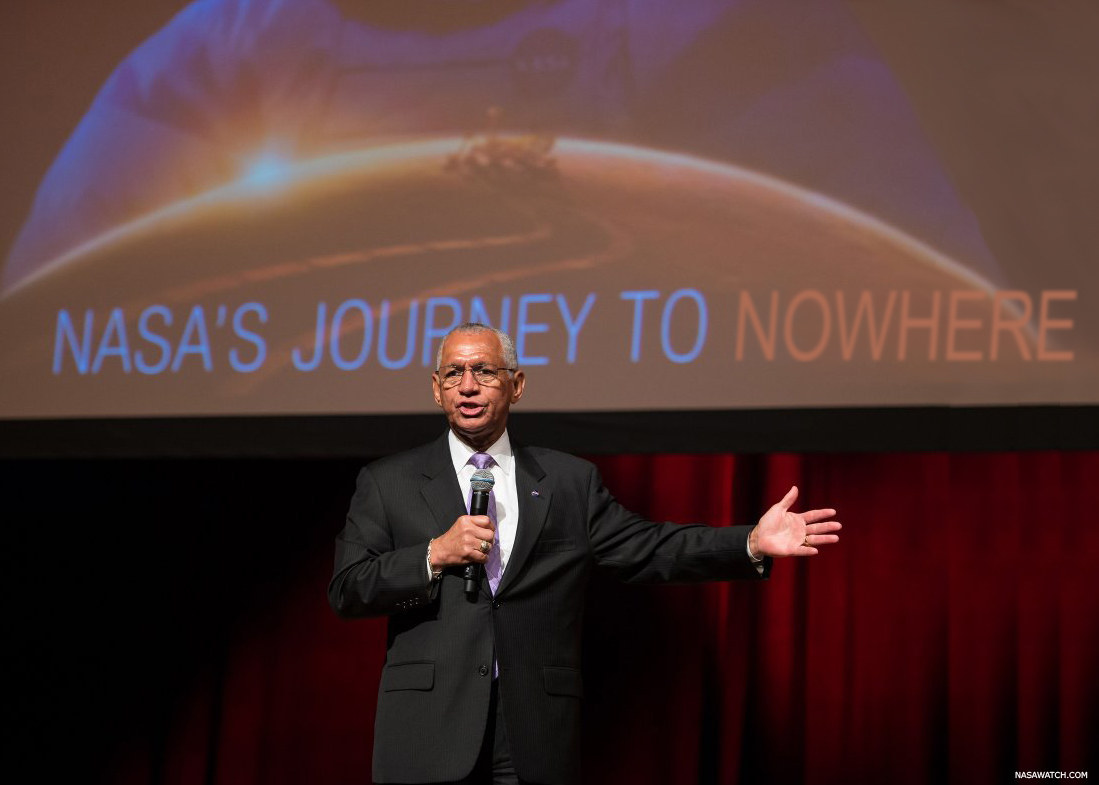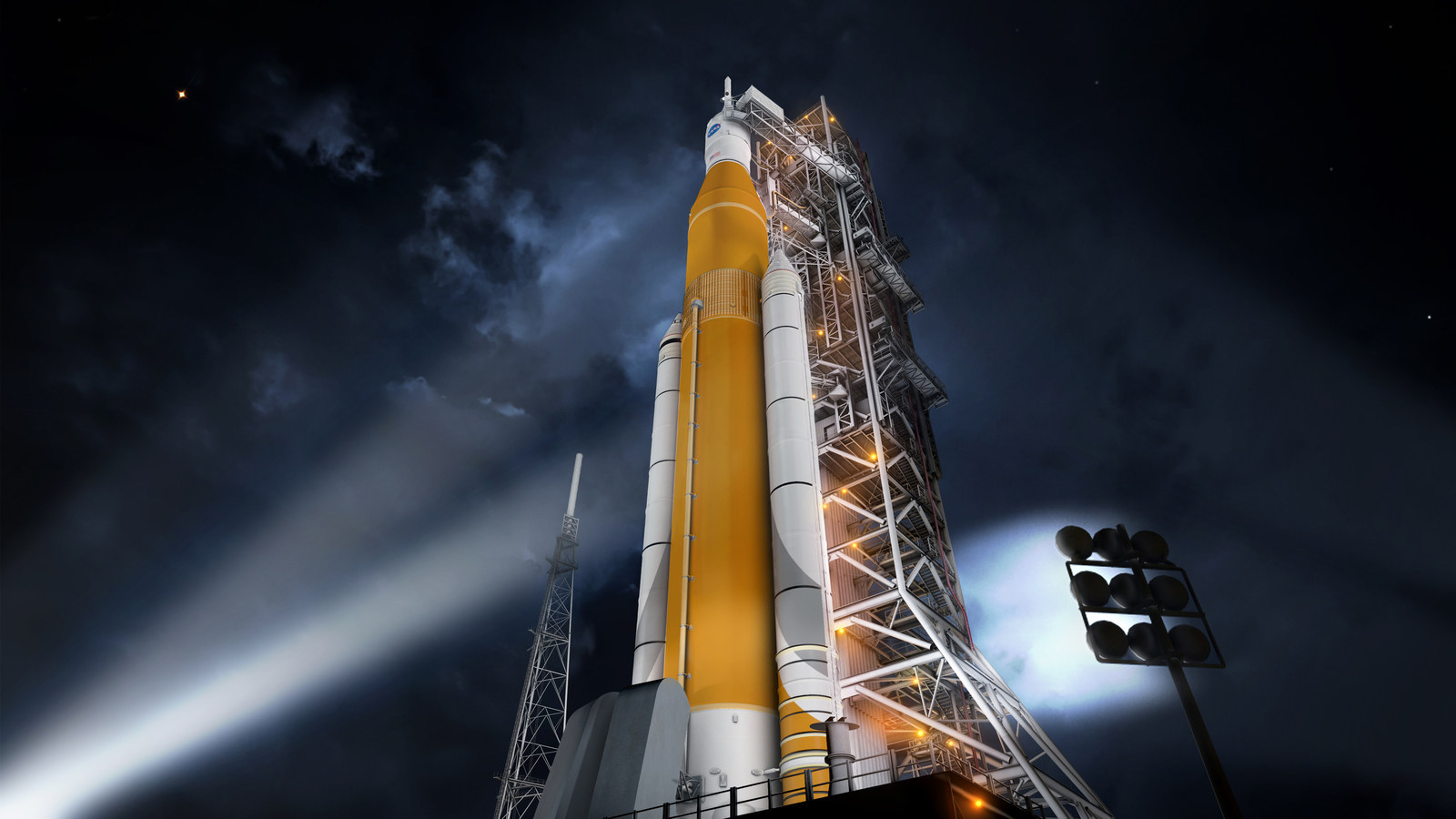
Space adventure fans might enjoy NASA’s latest saga, the story of a rocket to nowhere that Congress wants, very badly, built in Alabama. Or they might be really pissed off.
In its 2017 budget request, NASA asked Congress for $1.3 billion to build its next jumbo rocket. Last week, despite years of fighting with the Obama Administration over its plans to explore an asteroid with the rocket, the Senate Appropriations Committee not only granted the request, but gave the space agency an extra $995 million to build it.
A surprise billion dollars may sound good. But while adding money to “Space Operations,” the Appropriations Committee also cut $660 million from NASA’s science, aeronautics, and space technology programs that build the telescopes, observatories, planes, and landers that make the agency so beloved. In justifying this decision, the committee wrote that the rocket “is the nation’s launch vehicle that will enable humans to explore space beyond current capabilities.”
The futuristic space rocket, called the Space Launch System (SLS), won’t send any astronauts into space until at least 2023, and it doesn’t even have a destination. But that doesn’t seem to matter to lawmakers. Since the moon landings ended, NASA is and has always been a jobs program, more about dollars spent on the ground than discoveries made among the stars, with the SLS bonanza just the latest example.
“It is more the politics of pork than the politics of progress,” former NASA deputy administrator Lori Garver told BuzzFeed News. “There’s a long-time pattern at NASA where money aimed at science and research ends up with builders and contractors instead.”

The Senate space spending committee is headed by Republican Sen. Richard Shelby of Alabama, and on the minority side by Sen. Barbara Mikulski of Maryland, both of whom have NASA centers in their states. The SLS (nicknamed the “Senate Launch System” after it was forced on NASA in 2010), will be built at Marshall Space Flight Center in Huntsville Alabama, where a $45 million 15-story test stand for the rocket reached its intended height earlier this month.
“The point is to spend money and create jobs the way the Soviet Union did on its rocket design bureaus,” Keith Cowing of NASA Watch told BuzzFeed News. The SLS — “a rocket to nowhere,” as Cowing put it — fits this pattern neatly because it provides thousands of jobs in space states. No one knows where it will go. Maybe to an asteroid (the Obama administration’s unloved notion), or to circle the moon, or boost astronauts on their way to Mars.
Eric Berger, a reporter at Ars Technica decried the move to build the rocket ahead of a destination. Cuts also came to NASA’s “space technology” funding, a $130 million bite meant to keep aloft earth-observing satellites run out of Goddard Space Flight Center, based in Mikulski’s state of Maryland. As Berger said, “the motivation seems primarily to be keeping people employed.”
One problem with this approach is that you might end up with space rocket that doesn’t have any space technology — a habitat module, deep-space propulsion, landers — to actually let astronauts voyage to asteroids, or the moon, or Mars. You might spend billions on workers who maintain the rocket you’ve built, and not have any money left over to build the interplanetary survival gear needed to ever get to Mars, the ultimate goal of the space agency.
It’s happened before, Garver said, with the the $100 billion International Space Station. “We had to spend all the money just to get it built, with very little left for science.” Scientists have long complained how little research takes place on the orbiting lab. NASA’s scientific advisory committee decided only this month to send a fact-finding group to the foundation that manages ISS research, after questioning its scientific productivity.

“The critics are right, this isn’t a rational way to run a space program,” political science professor Harry Lambright of Syracuse University told BuzzFeed News. “But that doesn’t matter, because this is the way a space program will inevitably work in a democracy.”
So it has always been for NASA, born in a moment of Cold War lunacy over the Soviet Union claiming the moon for communism, and looking for another space race to justify its budget ever since the glamour of Moon landings first wore off.
In the 1960s, NASA administrator James Webb faced declining popular interest in the moon landing, responded by spreading NASA centers to politically important states, such as Lyndon Johnson’s Texas, California, Ohio, and Florida. NASA’s Stennis Space Center, which will build the rocket engines powering the SLS, is located in Mississippi, home to the chairman of the Senate’s overall spending committee, Sen. Thad Cochran. In a sense, that system is still working.
NASA built the space shuttle in the 1970s in a decision largely shaped by Richard Nixon’s reelection campaign. Since then, the space agency has had to compete for Congressional dollars like every other federal agency, which means that politicians will always look to jobs as a reason for any Mars landings, Lambright said. “They can’t spend money that Congress doesn’t give them.”
So, NASA will at least get a rocket out of the deal, he and others argue. “NASA is actually doing a very good job, in my view, of navigating to build a rocket while they can," Lambright said. "That is what there is money to build."
The real problem, former NASA official Scott Pace of George Washington University told BuzzFeed News, is that the Obama administration’s plans to fly astronauts to an asteroid and then Mars are not very interesting to international or commercial partners, who would rather return to the moon. Building SLS lets NASA keep its options open if the next president decides to look to lunar landings instead, something that Obama seemed to rule out in a 2010 speech.
Meanwhile, one commercial partner of NASA appears very much interested in Mars. SpaceX has announced that it will land an unmanned Dragon astronaut capsule on the Red Planet as early as 2018. That landing would depend on its yet-to-be-produced Falcon Heavy rocket, one almost as powerful as the SLS, carrying the capsule to Mars.
Planning to send Dragon to Mars as soon as 2018. Red Dragons will inform overall Mars architecture, details to come
That’s the same SpaceX that on April 8 demonstrated unparalleled rocket landing capabilities, by dropping one of its Falcon rockets onto an ocean barge after sending a satellite into orbit.
Might SpaceX privately building a big rocket in the next two years, and sending something to Mars, make SLS look redundant to politicians, finally ending NASA’s long cycle of rocket-building jobs programs?
“That’s kind of optimistic, and I’m an optimist,” said Garver, who served as a space policy advisor to Hillary Clinton in 2008. “I wouldn’t count on it.”

